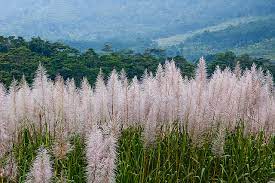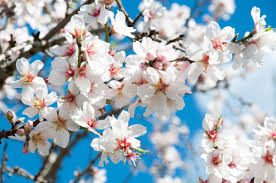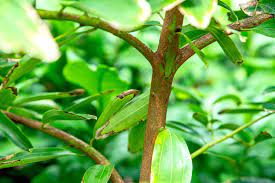Sugarcane Inflorescence: Economic Importance, Uses and By-Products
A sugarcane inflorescence refers to the flowering structure of the sugarcane plant (Saccharum officinarum). Sugarcane is a tall, perennial grass that is primarily cultivated for its sweet juice, which is rich in sucrose and used for producing sugar and various sugary products. However, sugarcane plants don’t typically flower under normal cultivation conditions. They primarily reproduce through vegetative propagation, where new plants are grown from sections of the stem called “setts.”
The sugarcane inflorescence is relatively rare and occurs in response to specific environmental conditions, stress factors, or genetic triggers. When the sugarcane plant does flower, its inflorescence is a complex structure consisting of multiple parts. The main axis of the inflorescence is called the panicle. It is a branched, cluster-like structure that holds the individual flowers.
It’s important to note that the appearance of the sugarcane inflorescence can vary depending on factors like the sugarcane variety, growing conditions, and the specific genetic triggers that lead to flowering. In many cases, commercial sugarcane cultivation aims to prevent flowering because it diverts the plant’s energy away from sugar production, potentially impacting the quality and quantity of the sugarcane harvest.
The Economic Importance and Uses of Strawberry Sugarcane Inflorescence

Sugarcane inflorescence refers to the flowering structure of the sugarcane plant. While sugarcane is primarily cultivated for its sweet juice, which is used for producing sugar and other related products, its inflorescence also holds some economic importance and uses. However, it’s worth noting that in commercial sugarcane cultivation, efforts are often made to prevent the plant from flowering, as flowering can negatively impact sugar yield and plant lifespan.
Here are some economic importance and uses of sugarcane inflorescence:
1. Propagation and Breeding: Sugarcane inflorescence plays a crucial role in the sexual reproduction and breeding of sugarcane plants. It’s used to develop new sugarcane varieties through controlled pollination and hybridization techniques. These efforts aim to improve traits such as yield, disease resistance, and sugar content.
2. Genetic Diversity: The inflorescence allows for the creation of genetic diversity within the sugarcane species. This is important for developing varieties that can withstand various environmental conditions and pests, ultimately contributing to more resilient and adaptable crops.
3. Research and Studies: Researchers study sugarcane inflorescence to better understand the plant’s reproductive biology, genetics, and molecular processes. This knowledge can lead to advancements in agricultural practices, disease management, and yield improvement.
4. Secondary Products: While sugarcane inflorescence itself isn’t a primary source of economic value, some cultures and regions use it in traditional medicine or as a source of fibers for crafts. These secondary uses contribute to local economies.
5. Beekeeping and Honey Production: Sugarcane flowers can attract bees and other pollinators. In areas where beekeeping is practiced, sugarcane inflorescence can provide a source of nectar for honey production. This can diversify income sources for beekeepers and support local ecosystems.
6. Cultural and Ritual Uses: In some cultures, sugarcane inflorescence is used in religious or cultural rituals. It may have symbolic significance and play a role in ceremonies or celebrations.
7. Seed Production: While sugarcane is primarily propagated through vegetative means (stem cuttings), the inflorescence can produce seeds. These seeds are used for research purposes, hybridization experiments, and the development of new varieties.
Read Also: Sugarcane Nodes: Economic Importance, Uses and By-Products
8. Biofuel and Biomass: While not a direct use of the inflorescence, sugarcane as a whole plant is used in some regions for biofuel production. The stalks, leaves, and other plant parts can be processed to produce bioethanol or used as biomass for energy generation.
9. Food and Culinary Uses: While less common, some cultures incorporate sugarcane inflorescence into their cuisine. The young shoots, sometimes referred to as “bamboo shoots,” can be consumed as a vegetable. They are often used in salads, stir-fries, and traditional dishes in certain regions.
10. Traditional Medicine: In some traditional medicine practices, extracts or preparations made from sugarcane inflorescence are believed to possess medicinal properties. These preparations might be used for various ailments, although scientific validation of these claims can be limited.
11. Biomaterials and Fibers: The fibers from sugarcane leaves and inflorescence can be used to make various products such as paper, ropes, mats, and handicrafts. This can create additional income opportunities for communities where sugarcane is cultivated.
12. Erosion Control: In some regions, sugarcane inflorescence and other plant parts are used for erosion control. The extensive root system of sugarcane helps bind the soil, preventing erosion in areas with slopes or unstable soil conditions.
13. Livestock Feed: While not a common practice, in certain cases, sugarcane inflorescence might be used as fodder for livestock, providing some nutritional value. However, its use as livestock feed is generally limited due to its lower nutrient content compared to other feed options.
14. Cultural and Ornamental Uses: In landscaping and gardening, dried sugarcane inflorescence can be used decoratively. They might be used in flower arrangements, wreaths, or other ornamental displays.
15. Fermented Products: Some traditional fermented products or beverages may incorporate sugarcane inflorescence for flavor or cultural reasons.
The Products and By-products That Can Be Derived From Sugarcane Inflorescence
Sugarcane inflorescence refers to the flowering part of the sugarcane plant. While sugarcane is primarily grown for its sweet juice, which is processed into sugar, there are several other products and by-products that can be derived from different parts of the sugarcane plant, including the inflorescence.
Here’s a list of potential products and by-products that can be derived from sugarcane inflorescence:
1. Ethanol: Sugarcane inflorescence can be a source of ethanol production. Ethanol can be extracted through fermentation of the sugars present in the inflorescence. Ethanol is commonly used as a biofuel and as an ingredient in alcoholic beverages.
2. Biochemicals: Various biochemicals can be derived from sugarcane inflorescence, such as organic acids, enzymes, and phenolic compounds. These biochemicals have applications in food, pharmaceuticals, and industrial processes.
3. Animal Feed: The fibrous parts of the sugarcane inflorescence can be used as animal feed. They provide roughage and some nutrition to livestock.
4. Compost: After the sugarcane inflorescence has gone through processing, the leftover plant material can be composted. This compost can serve as a soil conditioner and fertilizer.
5. Mulch: Dried and shredded sugarcane inflorescence can be used as mulch in agriculture. Mulching helps conserve soil moisture, suppress weed growth, and improve soil structure.
6. Handicrafts and Art: The dried and fibrous components of the sugarcane inflorescence can be used for creating handicrafts, decorative items, and even paper. These fibers can be woven or pressed into different forms.
7. Natural Fibers: The fibers from the sugarcane inflorescence can be extracted and used for various purposes, similar to other plant-based fibers like jute or flax. These fibers can find applications in textiles, rope-making, and more.
8. Medicinal Uses: In traditional medicine systems, certain components of sugarcane, including inflorescence, are believed to have medicinal properties. These include remedies for conditions like jaundice, urinary problems, and inflammation.
9. Biogas Production: The organic matter in sugarcane inflorescence can be used in biogas production. Through anaerobic digestion, methane-rich biogas can be generated and used as a renewable energy source.
10. Dyes and Pigments: Some components of the sugarcane inflorescence might contain natural dyes or pigments that could be extracted and used for coloring purposes.
11. Research and Study: Sugarcane inflorescence, like other plant parts, can be studied for its botanical characteristics, genetic traits, and potential applications in various fields.
In coclusion, it is important to emphasize that while sugarcane inflorescence has these potential uses, they are often secondary or niche applications. The primary focus of sugarcane cultivation remains the production of sugar and related products. Additionally, in modern sugarcane agriculture, efforts are often directed towards preventing the plant from flowering to maximize sugar yields, as flowering can lead to reduced sugar content and other negative effects on the plant’s productivity.
Read Also: Micro Farming: Comprehensive Guide and Benefits









